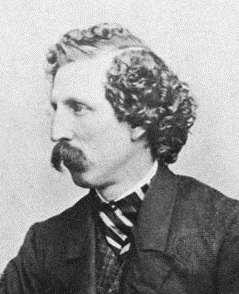Queensland University of Technology academic, Axel Bruns, set out earlier this year a cogent argument for preserving social media as ‘a first draft of the present’ in a similar way to how journalism has traditionally been described as ‘the first draft of history’. Bruns’ article was in The Conversation, an online journal of now large circulation which boasts its content contains ‘academic rigour, journalistic flair’ and which makes that content freely available under a Creative Commons licence.
Honest History over three years has tried to be an information-broker as well as a commissioner of new material within our area of interest. As an information-broker, we link to material from The Conversation probably more often than to material from any other source. We see The Conversation as the place where academic writers go who can’t be bothered waiting for a peer-reviewed, pay-walled journal to publish all of their thoughts and research results. (In truth, most academic writers do a bit of both but Honest History lacks the pelf to penetrate many pay-walls.)
Some of the material in The Conversation might lack the judicious air of compositions longer in the gestation but it usually makes up for that in relevance and conciseness. For those readers – and there may still be a few – who have not yet sampled The Conversation, this writer recommends it. He is only sorry that, lacking a current academic connection, he cannot write for it. To sum up, if journalism is the first draft of history and social media is the first draft of the present, then The Conversation could be seen as observations by folk who know their stuff and are keen to get it across and have us get across it.
The Conversation pieces posted between 6 and 8 December give a good idea of the range of material it puts out.
- Conrad Hamann of RMIT University remembers the late architect and theatre designer, Peter Corrigan, who was responsible for some of the more interesting buildings in Melbourne, including Building 8 at RMIT.
- Grainne Cleary and Hannah Tribe of Deakin University review a current exhibition Birds: Flight Paths in Australian Art, which is on at the Mornington Peninsula Regional Gallery. They put the case for ‘the true Aussie battlers that are our urban birds’.
- Jon Piccini of the University of Queensland takes a historical look at the human rights debate in Australia. Most of the issues exercising us today were around in some form in the 1970s – at least.
- In thinking about the sort of society in which those rights are exercised, Nicholas Morieson of the Australian Catholic University detects a Christian underpinning still, beneath our alleged secularism. (Not in The Conversation but relevant is Peter Lewis’s analysis in Guardian Australia of some polling about attitudes to religion and church and state.)
- In the same quadrant is Andrew Jakubowicz of the University of Technology, Sydney, on Australia as an ‘ethnocracy’. ‘It was designed’, he says, ‘to ensure nationals of British descent would be able to create a society populated by individuals as much like themselves as possible. And it has yet to fully transition to a more egalitarian pluralist contemporary democracy’. (Gwenda Tavan of La Trobe University discusses similar issues in her chapter in The Honest History Book, coming next year.)
- Gillian Dooley of Flinders University addresses the other major cross-cultural conundrum of Australian history in her piece on the interactions between Matthew Flinders and Indigenous Australians. (Larissa Behrendt traverses Indigenous-settler relations in her chapter in The Honest History Book, out next year.)
- Finally, featuring regularly on The Conversation and sometimes worth a quick browse for its insights into ‘Canberra Beltway’ issues is the work of Michelle Grattan, veteran journalist. This week, Grattan reports with a straight face that Senator Hanson believes her nominal colleague, Senator Culleton, has a swollen head. As various people have more or less said, if you like that kind of thing, then this is just the kind of thing you will like. (The picture below is of Artemus Ward, aka Charles Farrar Browne, American humorist, who may well have been the first to play around with that famous put-down.)
8 December 2016



Leave a Reply
You must be logged in to post a comment.